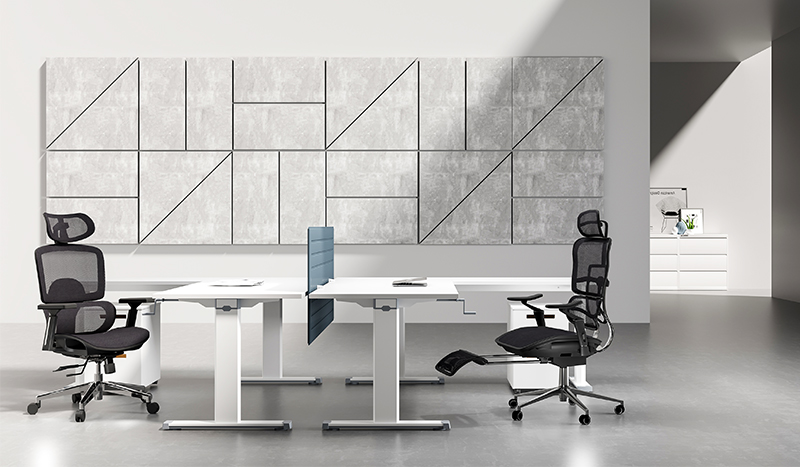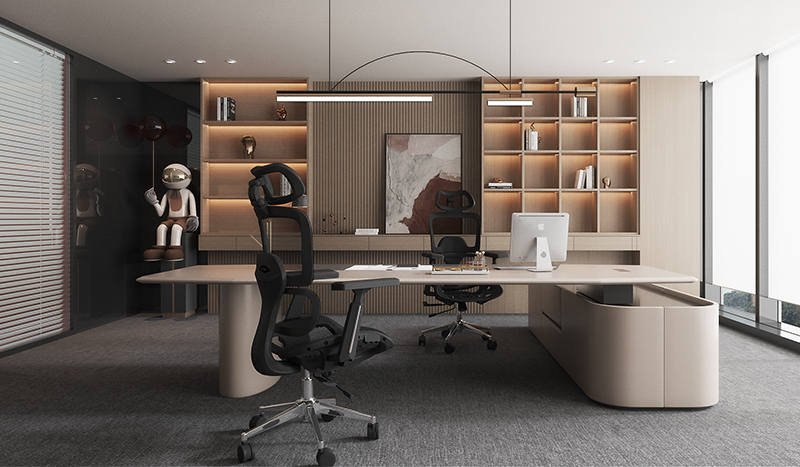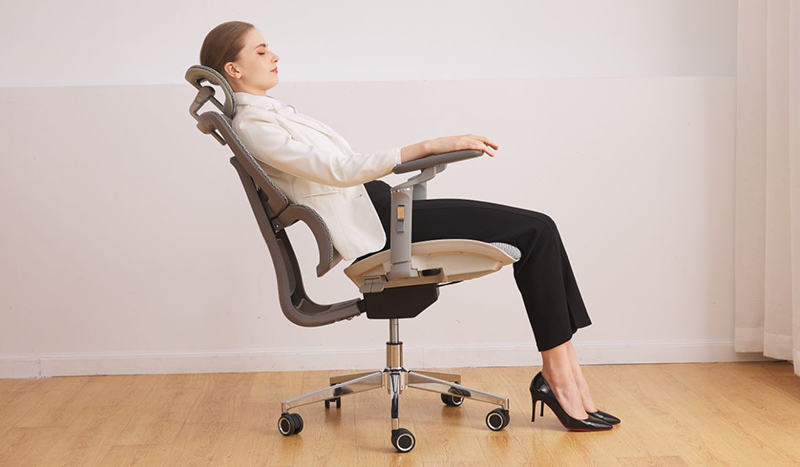Chained to Your Chair?
Chained to Your Chair? How a Standing Desk Can Revolutionize Your Workday and Well-being
It’s 3:00 PM. Do you know where your energy went?
For millions of us, this is the most familiar part of the workday. It’s the moment the caffeine wears off and the fog rolls in. Your focus, once sharp, is now a dull haze. A familiar ache begins to blossom in your lower back, your shoulders feel like they’re carrying concrete blocks, and your posture has slumped into a shape that can only be described as a human question mark. You are, quite literally, chained to your chair.
This isn’t a personal failing; it’s a modern epidemic. The average office worker, especially in our increasingly remote world, now sits for nearly 10 hours a day. We sit to work, to eat, to commute, and to relax. Our bodies, designed for movement, have been forced into a static, sedentary state, and the consequences are more than just a fleeting afternoon slump. They are a slow-burn crisis affecting our physical health, mental clarity, and overall productivity.
But what if you could break those chains? What if there was a tool that could fundamentally change your relationship with your workspace, transforming it from a source of fatigue into a catalyst for energy?
Enter the height-adjustable desk. This isn’t just another office furniture trend; it’s a revolution in personal workspace design, empowering you to introduce dynamic movement back into your day. In this complete guide, we’ll break down everything you need to know: the science-backed benefits, how to choose the right one for you, and—most importantly—how to use it correctly to unlock its full potential.
What Exactly is a Height-Adjustable Desk? The Basics
At its core, a height-adjustable desk (or standing desk) is exactly what it sounds like: a desk that allows you to easily and quickly change the height of your entire work surface, transitioning from a standard sitting position to a comfortable standing one. The goal is not to replace sitting entirely, but to provide the effortless flexibility to alternate between sitting and standing throughout the day.
This simple concept comes in two main forms:
1. Full Height-Adjustable Desks
This is the most popular and integrated solution, where the entire desk frame and surface move as one unit. They completely replace your old, static desk and become the new centerpiece of your office. Within this category, you’ll find two primary mechanisms:
- Electric Desks: These are the gold standard for convenience. Powered by one or two quiet motors, the desk glides up or down at the touch of a button. Most models come with programmable memory presets, allowing you to save your perfect sitting and standing heights. You simply press a number, and the desk moves to your pre-defined position automatically. This seamless transition makes you far more likely to actually use the feature regularly.
- Manual (Crank) Desks: For those on a tighter budget, manual desks offer the same ergonomic benefits without the electronics. Using a hand crank, you physically raise or lower the desk surface. While it requires a bit of effort and takes longer to adjust, it’s a reliable and cost-effective way to get the core functionality of a standing desk.
2. Standing Desk Converters (Risers)
If you love your current desk but want the benefits of standing, a converter is your answer. These are pre-assembled units that you place directly on top of your existing work surface. They have a separate platform for your monitor(s) and a tray for your keyboard and mouse. Using a spring-loaded or pneumatic mechanism, you can lift the unit up to a standing position in seconds. Converters are a fantastic entry point, offering a lower initial cost and zero need to discard your current furniture.
The “Why”: 3 Science-Backed Benefits That Truly Matter
Okay, so they let you stand up. But what does that really do for you? This is where the investment pays dividends, impacting three critical areas of your life.
Benefit #1: Reclaim Your Physical Health
This is the most immediate and profound impact. Your body was not designed to be folded into a chair for eight hours straight.
- Dramatically Reduce Back Pain: When you sit, immense pressure is placed on the discs in your lumbar spine (your lower back). Over time, this can lead to chronic pain and injury. By alternating to a standing position, you alleviate this pressure, allowing your spine to decompress and return to its natural “S” curve. Standing engages the core muscles that support your spine, building strength where you need it most. For many users, a significant reduction in back pain is the first benefit they notice, sometimes within the first week.
- Improve Posture and Muscle Tone: Think about your posture when you stand versus when you sit. Standing naturally encourages you to pull your shoulders back, engage your core, and align your head over your spine. It gently forces you to correct the “office slouch” that contributes to neck and shoulder pain. Over time, this strengthens the postural muscles that have become weak and dormant from years of sitting.
- Burn More Calories (The Honest Truth): Let’s be clear: a standing desk will not give you a six-pack. However, the science is undisputed: you burn more calories standing than sitting. While the exact number varies by individual, estimates range from an extra 0.15 to 0.8 calories per minute. It may not sound like much, but over a year, that can add up to the caloric equivalent of running several marathons. Think of it as a low-intensity, consistent positive action against a sedentary lifestyle.
- Lower Long-Term Sedentary Risks: The phrase “sitting is the new smoking” might be dramatic, but it’s rooted in real science. A highly sedentary lifestyle is linked to an increased risk of developing serious health conditions. By simply reducing your total sitting time each day, you are taking an active step to mitigate these long-term risks.
Benefit #2: Unlock More Energy and Better Focus
The physical benefits are just the beginning. The impact on your mental state is equally transformative.
- The End of the Afternoon Slump: That 3:00 PM brain fog is often a result of reduced circulation and oxygen flow from being inactive. When you stand up, your heart works a little harder, boosting blood flow throughout your body, including to your brain. This increased oxygenation acts as a natural energy booster, clearing away the mental cobwebs and helping you stay sharp through the end of the day.
- A Powerful Mental “Reset” Button: Have you ever been stuck on a difficult problem, staring blankly at your screen? The physical act of changing your posture can trigger a mental shift. Moving the desk from sitting to standing is a powerful contextual cue for your brain. It breaks the monotony, refreshes your perspective, and can often be the exact catalyst needed to overcome a creative block or approach a problem with fresh eyes.
- Improved Mood and Well-being: Studies conducted by organizations like the CDC have shown that users of sit-stand desks report significant improvements in mood. They often feel more energized, more comfortable, and less stressed compared to their sedentary colleagues. This enhanced sense of well-being has a powerful ripple effect on job satisfaction and overall happiness.
Benefit #3: Supercharge Your Productivity
When your body feels better and your mind is clearer, a natural byproduct is enhanced productivity. This isn’t just a feeling; it’s a measurable outcome. When you’re not distracted by back pain or fighting off fatigue, all of that preserved energy and focus can be channeled directly into your work. The ability to switch postures keeps you more engaged in your tasks, turning long work sessions into more dynamic and efficient periods of high output.
How to Use a Standing Desk Correctly: The Essential User Manual
Buying a standing desk and then using it incorrectly can negate the benefits or even create new problems. Success lies in a smart approach to integration.
- The Golden Rule: Memorize this phrase: “The best posture is your next posture.” The ultimate goal of a height-adjustable desk is not to force you to stand all day. It is to make regular, effortless movement the default.
- The Transition Plan for Beginners: Do not try to stand for eight hours on your first day. You will end up with sore feet and a bad attitude. Instead, ease into it:
- Week 1: Start with 30 minutes of standing for every 1-2 hours you sit.
- Week 2: Try to increase your standing intervals to 45-60 minutes.
- Ongoing: Find a rhythm that works for you. Many people find a 1:1 ratio—one hour sitting, one hour standing—to be the sweet spot. Listen to your body.
- The Ergonomic Checklist for Perfect Posture:
- Standing: Adjust the desk height until your arms are bent at a 90-degree angle, with your wrists straight while typing. Your shoulders should be relaxed, not hunched.
- Sitting: The same 90-degree elbow rule applies. Your feet should be planted flat on the floor (or on a footrest), with your knees at roughly a 90-degree angle.
- Monitor Position: In both positions, the top of your monitor(s) should be at or just slightly below eye level. You should not be tilting your head up or down to see your screen. A fully adjustable monitor arm is the single best accessory to achieve this perfectly.
- Get an Anti-Fatigue Mat: This is non-negotiable. A good quality mat provides essential cushioning, reduces strain on your feet, knees, and back, and encourages subtle micro-movements in your leg muscles, which further promotes circulation.
How to Choose the Perfect Height-Adjustable Desk for You
Ready to make the switch? Navigating the options is easy when you know what to look for.
- Step 1: Assess Your Space and Needs
- Surface Area: Measure your available space. Think about everything you need on your desk: one laptop, two large monitors, speakers, documents, a coffee cup? Choose a desktop size that won’t feel cramped.
- Lift Capacity: Add up the approximate weight of your equipment. A basic laptop setup is light, but a gaming PC tower with multiple monitors can be heavy. Dual-motor desks generally have a higher lift capacity (often 250 lbs / 113 kg or more).
- Step 2: Prioritize Key Features
- Height Range: This is critical. Check the desk’s minimum and maximum height specifications to ensure it can accommodate you ergonomically in both sitting and standing positions. This is especially important if you are shorter or taller than average.
- Motor System (for Electric Desks): A dual-motor system is typically faster, quieter, and more durable than a single-motor system. It provides a smoother, more stable lift, especially for larger or heavier setups.
- Memory Presets: For an electric desk, this is a must-have feature for convenience. The ability to save your ideal heights and switch between them with a single touch removes any friction and makes you far more likely to use the desk to its full potential.
- Stability: A wobbly desk is a productivity killer. Look for reviews that specifically mention the desk’s stability, especially at its highest setting. A sturdy frame with a low center of gravity is key.
- Step 3: Consider Budget and Style
- You can find a solution for almost any budget, from affordable converters to premium solid wood desks. Set a realistic budget before you start shopping.
- Think about aesthetics. The desktop material—from clean laminate and sustainable bamboo to luxurious solid walnut—and the color of the frame should complement your office decor.
Conclusion: Your Workspace, Reimagined
The move to a height-adjustable desk is so much more than a furniture upgrade. It is a fundamental shift in your approach to work. It’s a declaration that your health and well-being are not secondary to your professional output, but are, in fact, the very foundation of it. It’s about transforming a static, draining environment into one that is dynamic, energizing, and actively works for you.
You invest in a fast computer to keep up with your workflow. You invest in good software to streamline your tasks. Isn’t it time you invested in a workspace that invests back in you?
Break the chains of sedentary work. Take the first step toward a healthier, more focused, and more productive you today.












